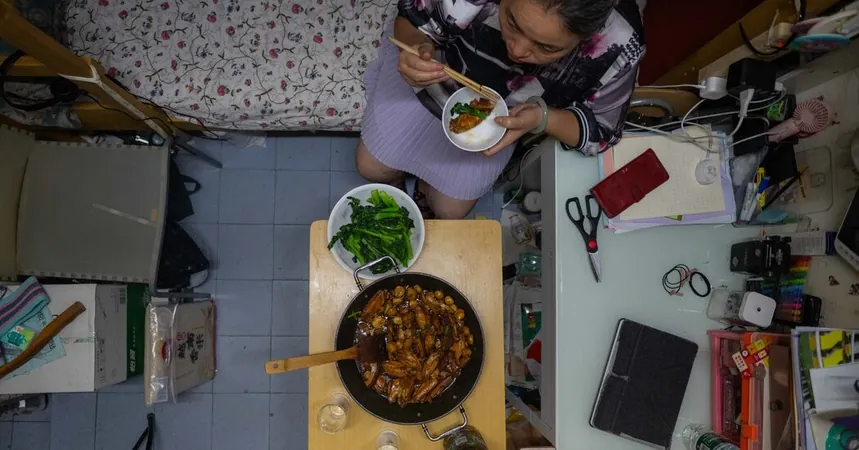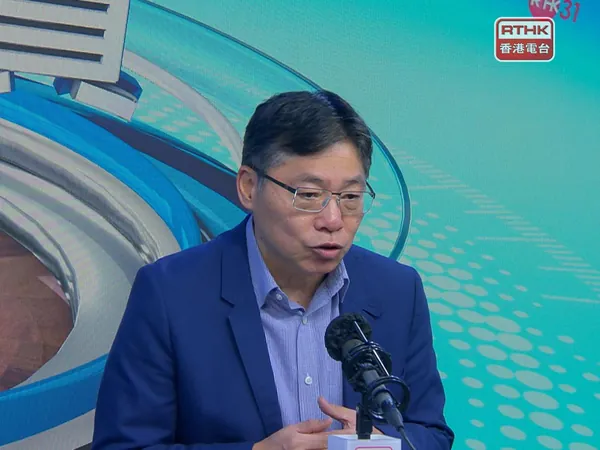
Grim Future for Tiny Homes: Hong Kong Families Bracing for Housing Crisis
2024-11-05
Author: Kai
Overview
As families in Hong Kong continue to grapple with unnervingly cramped living conditions, a new government policy threatens to exacerbate their plight. Liu Lanhua, a resident of a subdivided home, epitomizes the struggles faced by approximately 220,000 people living in these small quarters. Her kitchen, which doubles as her only bathroom, reveals the harsh realities of a housing crisis that many experts argue has reached a tipping point.
Income Inequality and Space Constraints
The narrowness of Liu's home, with pots and hairbrushes precariously arranged above the toilet, underscores the city's pressing issue of income inequality. With the average living space per person in Hong Kong being a meager 64.6 square feet — significantly lower than the size of a standard parking space in New York City — living conditions are dire for many lower-income families.
Government Policy Shift
In a bid to tackle these overcrowded conditions, Hong Kong’s Chief Executive John Lee recently announced strict regulations regarding minimum apartment sizes and essential fixtures. The new policy plans to phase out over 30,000 of the smallest subdivided homes, which could lead to heightened rents and mass evictions of vulnerable residents without adequate resettlement options.
Pressure from Beijing
The cause for urgency is partly rooted in directives from Beijing, which has pressured the Hong Kong government to eradicate these tiny homes by 2049, linking the housing shortage to the unrest that rocked the city in 2019. However, critics assert that short-term fixes could lead to long-term repercussions, further marginalizing the city’s most disadvantaged.
Affordability Concerns
Affordability is at the forefront of concerns; Liu, for instance, pays $500 a month for her 80-square-foot unit, a quarter of her earnings from her job at a construction site. She has been trapped in the maze of Hong Kong's public housing waitlist for over six years and views her cramped quarters as her only viable option. With ongoing rent hikes, the situation is growing more precarious, as fears of homelessness loom over those living in subdivided homes.
Substandard Living Arrangements
These subdivided units, often characterized by poor conditions and limited space, stem from landlords slicing larger apartments into smaller, rent-generating units. Many of these landlords are upper-middle-class individuals seeking to maximize profit from an increasingly desperate rental market. Ironically, per-square-foot rents for subdivided homes often outpace those for larger, more livable apartments.
Cage Homes
Living conditions are further complicated by the existence of 'cage homes' — substandard bed spaces separated by metal or wooden divisions. Advocacy groups argue that the government’s focus on subdivided homes disregards these even more troubling living arrangements.
Community Concerns
At a recent community meeting addressing this housing crisis, uncertain residents voiced doubts about the government’s ability to provide financial support or facilitate any quick resolutions for those facing eviction. Questions linger: What will happen to families displaced by these changes? Will they receive priority for public housing?
Personal Stories
Social workers like Moon Tang, a mother of three, illustrate the urgency of the situation. She expressed frustration about increased standards without corresponding financial means to meet them, questioning where families will go if forced out of their homes.
Promises from the Housing Bureau
While the government’s Housing Bureau has committed to an orderly transition, promising to inspect apartments and impose penalties on landlords who refuse to comply, many residents like Ben Shek, a 68-year-old technician living alone in a 60-square-foot apartment, fear instability. For Shek, who shares a bathroom with two other families and has mobility issues since suffering a stroke, affordable, accessible housing is not merely a luxury but a necessity.
Call for Urgent Solutions
As frustrations grow and lives remain on the line, the tiny homes crisis in Hong Kong shines a stark light on the complexities of urban poverty, demanding urgent attention and innovative solutions from the government and society. With the new regulations set to go into effect soon, residents await the fallout, hoping for a lifeline in an increasingly threatening housing landscape.


 Brasil (PT)
Brasil (PT)
 Canada (EN)
Canada (EN)
 Chile (ES)
Chile (ES)
 España (ES)
España (ES)
 France (FR)
France (FR)
 Hong Kong (EN)
Hong Kong (EN)
 Italia (IT)
Italia (IT)
 日本 (JA)
日本 (JA)
 Magyarország (HU)
Magyarország (HU)
 Norge (NO)
Norge (NO)
 Polska (PL)
Polska (PL)
 Schweiz (DE)
Schweiz (DE)
 Singapore (EN)
Singapore (EN)
 Sverige (SV)
Sverige (SV)
 Suomi (FI)
Suomi (FI)
 Türkiye (TR)
Türkiye (TR)